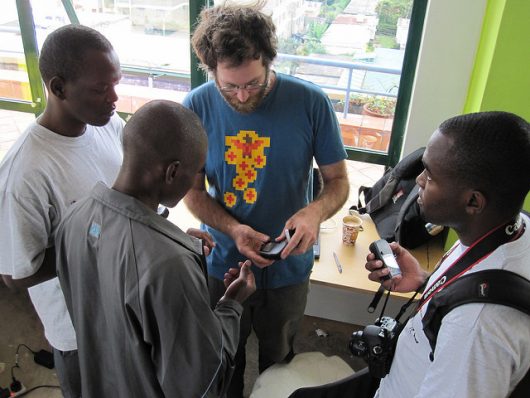The Relationship Between Creativity, Innovation and Poverty

Mainstream thinking revolves around the idea that emerging nations need the industrialized world to bring innovation to them, since they lack the resources to innovate themselves. Silicon Valley and their cohort have proven themselves to be masters of advancing and solving first-world issues, but they do little to solve the very real problems that exist in the developing world. Their hearts lie in the right place, but, having grown up in a different world with a vastly different life, they tend to lack the knowledge to fully understand what will and won’t work.
The true innovators of our time are those who live within the borders of developing countries, as they are the ones who truly comprehend the complex relationship between creativity, innovation and poverty.
Creativity and Poverty
In an interview with Innovations Online, a technology and entrepreneurial digital magazine, Marcelo Giugale, a senior economic advisor at the World Bank, stated that “innovation is not the same as invention. Innovation is the actual application of an invention.”
According to Ken Burns, an Ashoka fellow in a similar interview with Innovations, the minds in first world countries often innovate for the sake of innovating. When people live in dire situations and are consistently faced with constrained resources, they may be driven to solve problems and create in ways that can fundamentally change their daily lives.
The creativity that comes from the people who live in extreme poverty has the potential to instate meaningful and large-scale change that can improve the lives of millions, and not just those in the middle and upper middle class seen in developed countries. The link between creativity, innovation and poverty is being acted upon within the minds of several talented individuals living in emerging countries.
Map Kibera and Insiders4Good
In 2009, young Kiberans of the Kibera division in Nairobi, Kenya, created Map Kibera, the first open and free digital map of their own community. Until then, it was just a blank spot on the map. The primary goal of Map Kibera was “to find a new solution to an old problem: the lack of participatory democracy in Kibera.” The platform aims to address the omission of Nairobi’s citizens from policy decisions, mass communications and city representation.
The site utilizes the digital age to allow the region’s inhabitants to bypass the traditional gatekeepers of data and information. They no longer must rely on the common methodologies of NGOs to learn the facts about HIV, gender, malaria, sanitation and other important health facts in their own community – they can now research the information themselves. Map Kibera has recently grown into a full interactive community project and has expanded to Mathare and Mukura.
Insiders4Good East Africa Fellowship is a training program that, in 2017, brought together 20 young entrepreneurs from Rwanda, Uganda, Kenya and Tanzania who had innovative business ideas that have the potential to improve their communities. The program consists of six months of technical and strategic mentorship from international and local leaders.
Mensa Healthcare and Worknasi.com
Many of these young entrepreneurs utilized the cross-section between creativity, innovation and poverty to address and solve many critical local problems. Using artificial intelligence, Peter Aketch’s Mensa Healthcare provides actionable data to pharmaceutical companies, public health organizations and governmental agencies.
The necessity for such an innovation is vital due to the healthcare system’s lack of comprehensive and efficient digital record keeping. This innovation will decrease the possibility of misdiagnosis and allow for a more robust collection of public health data.
Eighty percent of graduates in Tanzania struggle to find jobs. This has led to an increase in crime, extremism, drug abuse, and violence. Edgar Mwampinge’s Worknasi.com aims to help these youths by making it easier for start-ups and freelancers to succeed.
His goal is to make shared office space available by connecting these youths with business and office owners who wish to share their workspaces.
IV Drip Alert and Lyon Analytics
In Rwanda, Ange Uwambajimana’s IV Drip Alert enables nurses to more easily manage intravenous fluids through its wireless system. This creative innovation was in response to problems such as embolism which can occur if the medical observer forgets to change the IV at the right time.
And Kenya’s John Mugendi developed a breast cancer prediction system. He proposes that his Lyon Analytics will track the progression from onset to late stages.
2015 Website
2015 is a site that launched in the Middle East. It invites users to submit their own creations that help bring awareness to social issues such as poverty in the Arab region. The relationship between creativity, innovation and poverty is front and center on the site as it showcases images and videos of hunger, the vulnerable and of poverty.
This “movement,” as some have come to call it, was born out of a reaction to the promise made by the nearly 200 world leaders at the United Nations Millennium Summit in 2000. They pledged to eradicate extreme poverty by the year 2015; however, as of 2012, the number of people still living in extreme poverty checked in at 3 billion.
The creative mind brings wonderous elements to the world — whether that be in new technological advances in the medical field, social satire, digital communications or a site dedicated to awareness. As long as ambition and goodwill prevail, there will always be a relationship that exists between creativity, innovation and poverty. The 2015 slogan reads, “Art changes perceptions, perceptions change people, people change the world,” and its mantra could not be more right.
– Aaron Stein
Photo: Flickr
